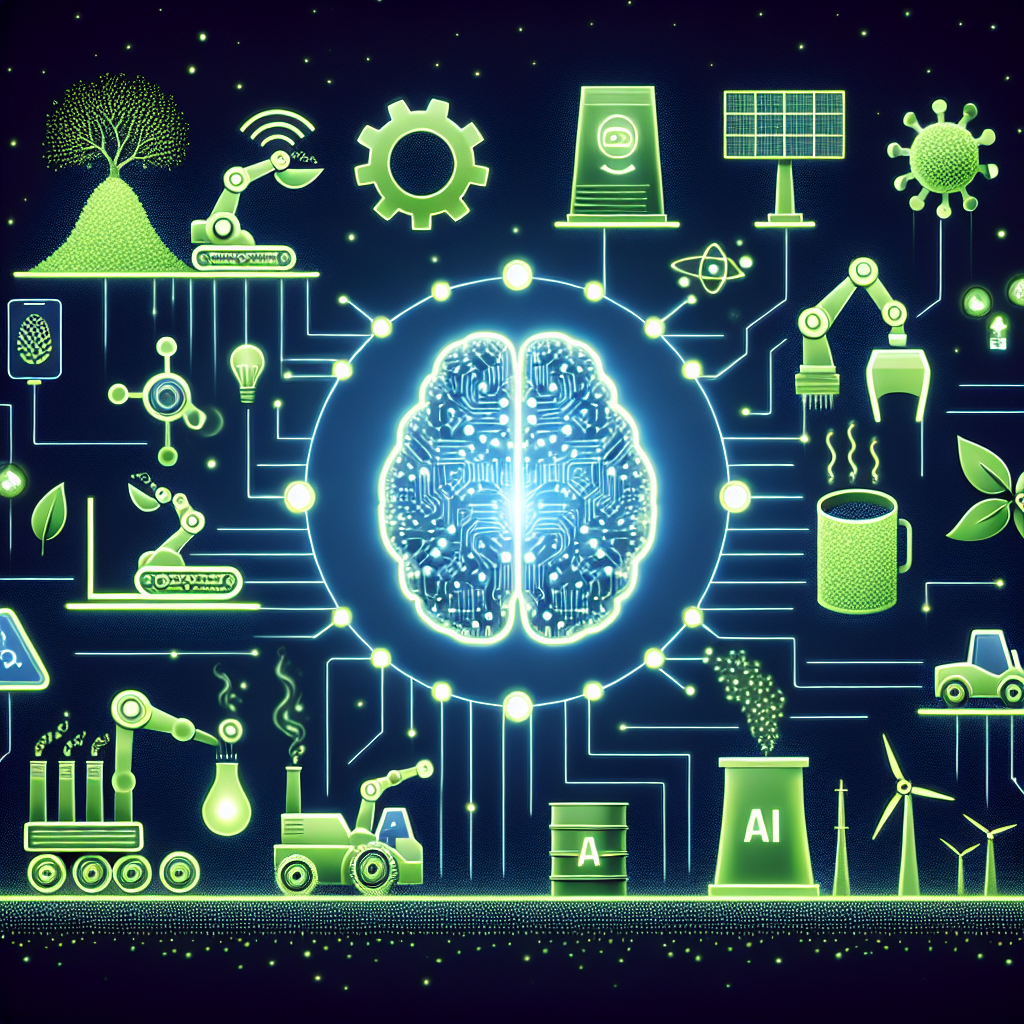Artificial intelligence (AI) is revolutionizing various industries, and the bioenergy and biomass sector is no exception. By harnessing the power of AI, companies in this field are able to drive innovation, increase efficiency, and reduce costs in the production of renewable energy sources. From optimizing biomass supply chains to improving biofuel production processes, AI is transforming the way we generate energy from organic materials. In this article, we will explore how AI is driving innovation in bioenergy and biomass, and answer some frequently asked questions about this exciting technology.
Optimizing Biomass Supply Chains
One of the key challenges in the bioenergy and biomass industry is the efficient sourcing and transportation of biomass feedstock. AI technologies, such as machine learning algorithms and predictive analytics, are being used to optimize biomass supply chains and streamline the process of collecting, storing, and transporting biomass materials.
By analyzing historical data on biomass availability, transportation routes, and weather patterns, AI can help companies predict demand for biomass and optimize the logistics of transporting it from farms and forests to processing facilities. This not only reduces costs and improves efficiency but also minimizes the environmental impact of biomass transportation by reducing the carbon footprint of the supply chain.
Improving Biofuel Production Processes
Biofuels, such as ethanol and biodiesel, are renewable alternatives to fossil fuels that are produced from organic materials like corn, sugarcane, and algae. AI is being used to optimize the production processes of biofuels, making them more cost-effective and environmentally friendly.
Machine learning algorithms can analyze data from sensors and monitoring devices in biofuel production facilities to optimize the use of raw materials, energy, and water. By identifying patterns and trends in the data, AI can help companies improve the efficiency of biofuel production processes, reduce waste, and increase the yield of biofuels.
In addition, AI technologies can be used to develop new biofuel production techniques that are more sustainable and efficient. For example, researchers are using AI to design genetically modified microorganisms that can convert biomass into biofuels more effectively, leading to higher yields and lower production costs.
Enhancing Renewable Energy Integration
AI is also playing a crucial role in integrating renewable energy sources, such as bioenergy and biomass, into the existing energy grid. By analyzing data on energy consumption, weather patterns, and electricity prices, AI can help companies optimize the use of renewable energy sources and reduce reliance on fossil fuels.
For example, AI algorithms can predict fluctuations in renewable energy generation from biomass plants and adjust the output of other energy sources, such as wind and solar, to compensate for these variations. This helps to stabilize the energy grid and ensure a reliable supply of electricity to consumers.
Moreover, AI can optimize the operation of biomass plants by predicting maintenance needs, identifying potential equipment failures, and scheduling repairs before they cause downtime. This proactive approach to maintenance can reduce costs and increase the overall efficiency of biomass power plants.
Frequently Asked Questions about AI in Bioenergy and Biomass
Q: How is AI being used to optimize biomass supply chains?
A: AI technologies, such as machine learning algorithms and predictive analytics, are being used to analyze data on biomass availability, transportation routes, and weather patterns to optimize the logistics of collecting, storing, and transporting biomass feedstock.
Q: How is AI improving biofuel production processes?
A: AI is being used to optimize biofuel production processes by analyzing data from sensors and monitoring devices in production facilities to improve the efficiency of raw material use, energy consumption, and water usage.
Q: What are some examples of AI applications in bioenergy and biomass?
A: AI is being used to optimize biomass supply chains, improve biofuel production processes, and integrate renewable energy sources into the existing energy grid. Additionally, AI is being used to develop new biofuel production techniques and optimize the operation of biomass power plants.
Q: How is AI helping to reduce the environmental impact of bioenergy and biomass production?
A: By optimizing biomass supply chains, improving biofuel production processes, and integrating renewable energy sources, AI technologies are helping to reduce the carbon footprint of bioenergy and biomass production and minimize the environmental impact of these industries.
In conclusion, AI is driving innovation in the bioenergy and biomass sector by optimizing biomass supply chains, improving biofuel production processes, and enhancing the integration of renewable energy sources into the existing energy grid. By harnessing the power of AI, companies in this field are able to increase efficiency, reduce costs, and minimize the environmental impact of bioenergy and biomass production. As AI continues to evolve and advance, we can expect to see even more groundbreaking innovations in the field of bioenergy and biomass in the years to come.

